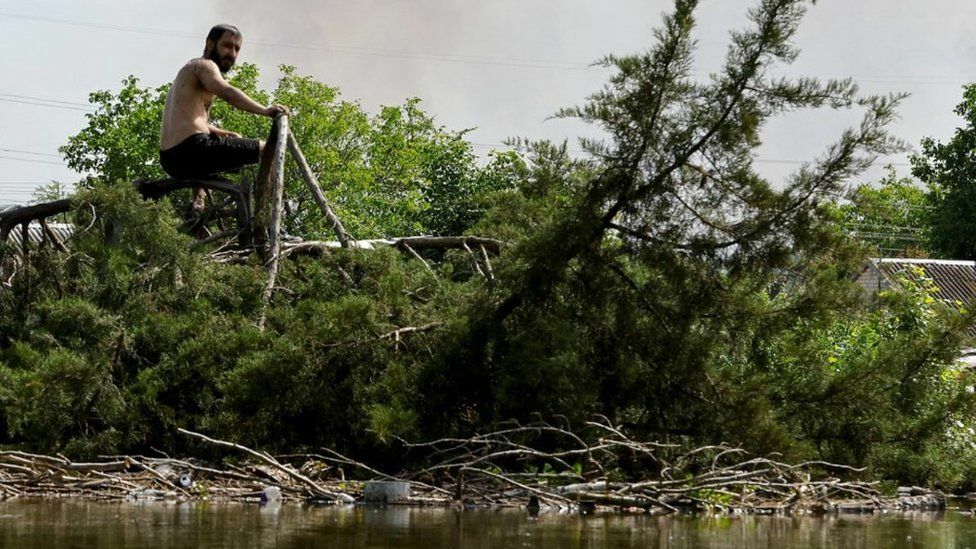Ukraine agriculture crisis looms as dam collapse risks desertification

The ongoing conflict in Ukraine has not only resulted in devastating humanitarian consequences but also poses a severe threat to the country’s agriculture. Ukrainian officials have warned that the southern region’s fertile lands could transform into deserts as early as next year due to the destruction of vital irrigation systems that rely on the Kakhovka reservoir. The reservoir is rapidly depleting, sending approximately 4.4 cubic miles of water down the Dnipro River towards the Black Sea.
Before the war, the agriculture ministry states that 31 irrigation systems provided water for more than 2,200 square miles of farmland. Taras Vysotsky, First Deputy Minister, explained, “The dam was the only source of water for irrigation. The dam and the pumping station in it were needed for us to take this water and deliver it. This is now destroyed. If farmers are going to have water lines, it should be built again from the beginning.”
The Kherson region, one of Ukraine’s most fertile and productive areas, will be heavily impacted. The region produces a variety of crops, including onions, tomatoes, sunflowers, soybeans, and wheat. Dairy farms are also expected to suffer. Russian-occupied areas of Ukraine, including Crimea, may experience some of the worst impacts. The flooding along the Russian-controlled southern shore of the Dnipro is significantly worse than on the Ukrainian-held northern side.
“It could take up to five years to repair [the dam],” Vysotsky said, “or rebuild it again from the start. So if we’re losing US$1.5bn for five years, we can calculate that the sector would lose around US$7bn.” The flooding has already triggered a sharp rise in global wheat prices.
In addition to agriculture, the destruction of the reservoir will also affect drinking water supply in populated areas. Officials are working to find solutions for providing potable water to towns and villages where the taps have run dry. Pollution is another consequence of the flooding, as tons of engine oil and other chemicals were dumped into the water when the dam and hydroelectric plant collapsed.
Sofia Sadogurska, climate and policy expert at Ecoaction Ukraine, said, “Although it will take weeks to understand the full impact… we can already see pollution in the area is very high. Both from the hydroelectric power station itself and from secondary pollutants in areas. Every city has its own sewage system.” Ukrainian President Volodymyr Zelensky referred to the situation as “an environmental bomb of mass destruction,” and the country’s prosecutor general’s office is investigating a possible crime of “ecocide.”
As Ukraine continues to grapple with the consequences of Russia’s unprovoked invasion since February 2022, the destruction of the dam and its far-reaching impacts add to the mounting challenges faced by the country.
Latest Thailand News
Follow The Thaiger on Google News:


























